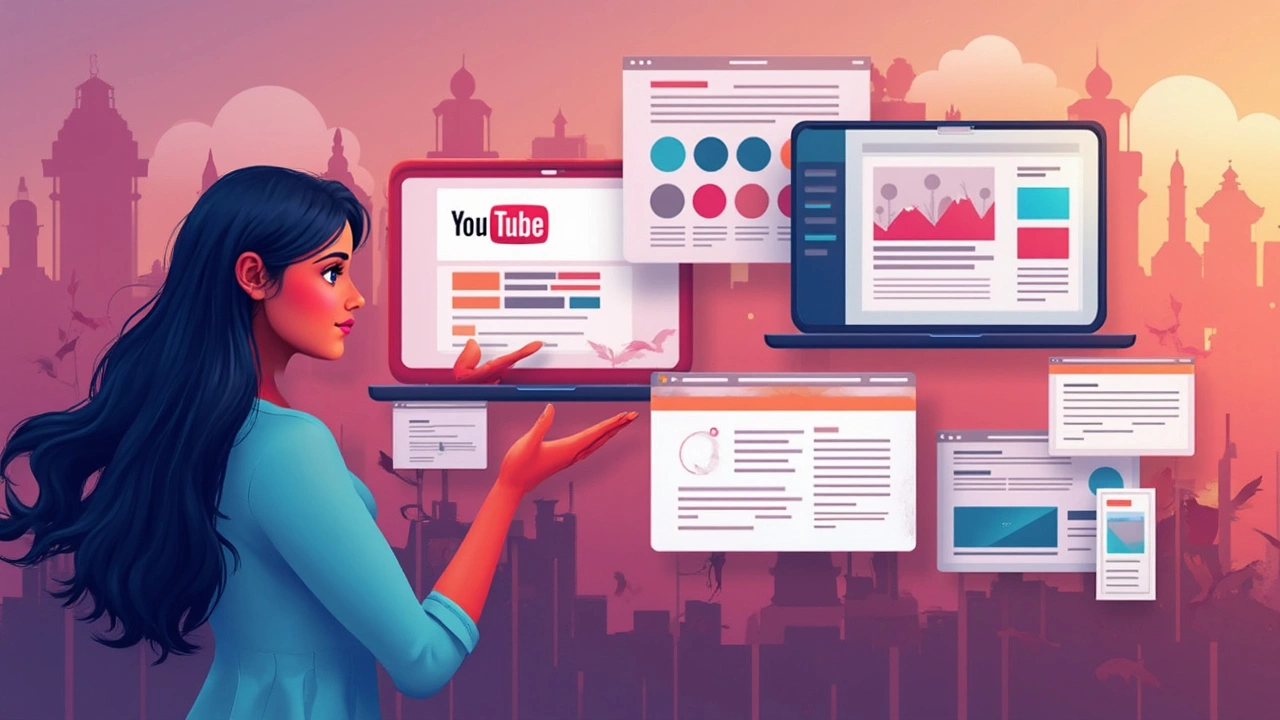Can You Start Digital Marketing With No Money? Real Tips for Zero-Budget Beginners

Forget the myth that digital marketing is only for people throwing money at ads. You actually don’t need a single dollar to get started. Plenty of successful marketers started with an old laptop, an internet connection, and a lot of hustle. Some even made their first dollar online before spending a cent.
Want to know what’s crazy? You have access to more free information and marketing tools right now than most companies did a decade ago. Want to run a campaign? There are free versions of email platforms. Need analytics? Google hands you tons of data for nothing. From free online courses to social media, everything you need to get moving is out there if you’re ready to dig in and try.
The most valuable tool? Your willingness to actually do stuff, not just read about it. Even the fanciest paid software or biggest ad budget won’t help much if you don’t learn by taking action. Jump in. Test things out. That’s how digital marketing works—no money required at the starting line.
- Why You Don’t Need Money to Begin
- Free Tools That Get the Job Done
- Real-Life Skills: Learn by Doing
- Building Your Online Presence for Free
- Turning Free Experience Into Cash
Why You Don’t Need Money to Begin
Most people think you need a budget to break into digital marketing, but honestly, that's old-school thinking. The internet levels the playing field for everyone. You can learn the ropes, test strategies, and even land your first client or sale without spending a dime if you know where to look.
Look at what’s out there for free: YouTube is loaded with easy-to-follow digital marketing videos, and big brands like Google offer step-by-step training with Google Skillshop and Digital Garage. HubSpot Academy also hands out free certifications in social media, content, and more.
Why do companies offer this stuff for free? Simple—they want you to use their tools, but you’re not stuck paying for anything upfront. You can set up a Gmail, build a simple website with free tools like WordPress.com, and join forums, groups, or local meetups to swap knowledge. Everything you need to get started is legit and zero-cost.
Check out this quick table that shows what you can get in the world of digital marketing before spending any money:
| What You Need | Free Platform | What You Get |
|---|---|---|
| Email marketing | Mailchimp (Free plan) | 500 contacts, basic analytics |
| Social media posting | Facebook, Instagram, X (Twitter) | Unlimited posts, free insights |
| Web analytics | Google Analytics | Comprehensive traffic data |
| Learning digital marketing | YouTube, Google Garage, HubSpot Academy | Free video courses & certifications |
The real cost is your time and attention, not your wallet. Whether you're a student, looking for a side gig, or want to change careers, the tools and knowledge are laid out for anyone who’s ready to take action. Don’t let a lack of cash keep you from getting started. The free route is genuinely possible right now.
Free Tools That Get the Job Done
You don’t need to spend hundreds to access solid digital marketing tools. Some of the best ones out there won’t cost you a penny and can handle almost anything a beginner needs. Big brands use a lot of these same tools—so you’re in good company.
If you want to learn digital marketing with no money, start by building your toolkit from these:
- Google Analytics – It tracks who visits your website, what they do, and what brings them in. It’s the backbone of online marketing and 100% free.
- Google Search Console – This helps you figure out how your website is showing up in Google search. Super important for getting traffic without paying for ads.
- Mailchimp (free tier) – Need to send emails? Mailchimp gives you basic automation for up to 500 contacts. That’s plenty for practice campaigns or getting your first audience started.
- Canva – You don’t need experience in design. Canva lets you make pro-looking graphics for ads, social posts, and banners with easy drag-and-drop tools. The free version is powerful enough.
- Buffer or Hootsuite (free plans) – Schedule and manage your posts on multiple social platforms to save time. Both have free options if you keep it simple.
- WordPress.com – Launch a basic website or blog with zero costs. It’s a classic for a reason, and you’ll learn a ton about web basics just by using it.
Check out how these free tools stack up for core marketing jobs:
| Tool | What You Get Free | Number of Users (est.) |
|---|---|---|
| Google Analytics | Full website tracking & reports | Over 28 million |
| Mailchimp | 500 contacts, basic email tools | 13 million |
| Canva | Thousands of templates, media | 135 million |
| WordPress.com | Basic website/blog hosting | 409 million monthly users |
You can expand later if you need more, but don’t sweat it right now. When you understand what each tool does and get your hands dirty, you’ll be able to move fast once you have a budget. And for now, you can learn everything on real tools, for free.

Real-Life Skills: Learn by Doing
If there’s one shortcut in digital marketing, it’s jumping in and getting your hands dirty. No online course, no matter how good, replaces actually running a campaign, posting on socials, or analyzing real data. You learn more from messing up a few times than from watching ten hours of YouTube guides.
Start with stuff you already use. Got an Instagram account? Try building a theme page and growing it just by posting daily. Use LinkedIn? Write a post that teaches something, then check which works better—text only or with a picture. Got a hobby? Make a free blog on WordPress or Medium and see if you can get traffic by testing keywords and sharing your posts. Actual practice shows you what gets clicks and what falls flat. This is the fastest way to pick up skills you’ll use everywhere in digital marketing.
- Run a practice campaign using a free tool like Mailchimp—send newsletters to friends and family to see how design and subject lines affect open rates.
- Launch a free product listing on Facebook Marketplace and write different descriptions to see what gets faster responses.
- Set up Google Analytics on your site or blog—even watching your visitors in real time teaches you valuable stuff.
If you want structure, use Google’s free Digital Garage or HubSpot Academy. They both offer hands-on learning that’s actually recognized by employers in digital marketing. According to a 2024 LinkedIn Skills Report, employers are most interested in real campaign experience over certificates with no proof of action.
| Learning Method | Free/Paid | Value for Beginners |
|---|---|---|
| YouTube "how-to" channels | Free | Quick tips, trend ideas |
| Personal blog or page | Free | End-to-end practical skills |
| Freelance micro-tasks (Fiverr, Upwork) | Free to start | Real client feedback |
Bottom line: nobody’s born knowing digital marketing. The more you play around and build things yourself, the faster you’ll learn—and it won’t cost a penny to start.
Building Your Online Presence for Free
This is where things get real. If you want to break into digital marketing with no cash, you need people to find and trust you online. The good news? Creating your own space online doesn’t need any money, just time and a bit of know-how.
Start simple. Lock down your spot on social media. Grab your handles on platforms like Instagram, LinkedIn, Twitter (X), and Facebook. Every one of these lets you build a profile for free—and yes, brands totally check your profiles before they trust you with their campaigns. Even if you’re just starting, a regular stream of posts about what you’re learning, tips you’ve picked up, or even sharing digital marketing news sets you apart.
Want a website? Don’t let hosting prices put you off. You can spin up a free portfolio or basic site using platforms like WordPress.com, Wix, or Carrd. These options don’t cost a dime up front. For your site, focus on the basics:
- Write a clear bio or about-me story.
- Add a contact page or email link.
- Show off any work, school projects, or even digital marketing experiments you’ve tried.
Build proof as you go. If you post a daily tip or run a small social media challenge, put the best stuff on your profile or free website. The real trick? Don’t hide what you’re learning. Even top marketers post their failed experiments and new breakthroughs—people love seeing growth.
Here’s a wild stat from 2024: more than 62% of small businesses get their first leads just from a Google Business Profile or simple social media page. That means you don’t need a flashy site or paid ads to attract attention.
Make Google work for you, too. Fill out all your free directory spots—think Google My Business (for any side hustle or freelance idea), LinkedIn, and any local listing site. This boosts your name in search results, even if you barely know SEO yet.
Quick checklist to keep you moving:
- Claim your handles on at least three social sites.
- Set up a simple, free site or portfolio.
- Share something valuable every week (tips, stats, lessons learned).
- Fill in your Google Business, LinkedIn, and any other free directory you can find.
- Watch what gets attention and lean into it—experiment and adjust.

Turning Free Experience Into Cash
So, you’ve been messing around with digital marketing tools, trying out social media posts and getting hands-on with free email platforms. Now what? It’s time to turn those hard-earned skills into actual income. The cool part is, real businesses need digital marketers who can show what they’ve done—not just list buzzwords on a CV.
Start by creating a simple portfolio. Show off your actual work: screenshots of posts you’ve made, email templates you built, or analytics from your own test campaigns (even if it’s just for your cousin’s garage band). That’s far more impressive than just saying, “I took a course.”
Now, where do you sell? There are a few places to start:
- Freelance sites: Fiverr, Upwork, and PeoplePerHour are crawling with small businesses looking for someone to get them traffic or run their socials. Add your portfolio, offer to set up their Instagram, or write email campaigns. Start cheap to get those first reviews, then raise your rate.
- Pitch local businesses: Loads of small shops want a web presence but don’t know how to start. Walk in (or send a polite DM) and show what you can do for them—maybe a few social posts or a welcome email series to customers. A lot of first clients come from real-life connections, not fancy websites.
- Create your own channel: Got a TikTok or blog? Build an audience, then go for affiliate marketing or sponsorships. Some affiliate programs don’t require a website; you just need to show you can get clicks.
When employers see real results—even if it’s the engagement numbers from your personal Instagram—they know you can walk the talk. According to LinkedIn’s 2024 Skills Report, digital marketing is one of the top 10 most in-demand skills worldwide, and businesses are hungry for folks who’ve actually done the work.
| Platform | Median Beginner Project Fee (USD) |
|---|---|
| Fiverr | $40 |
| Upwork | $50 |
| Local Businesses | $100+ |
Don’t underestimate the value of your free experience. Every time you run an online poll or boost a post organically, you’re building up a toolkit that’s in demand. Package it. Show it off. People and companies will pay when they can see what you’ve actually done and you know how to deliver results.

Post-Comment